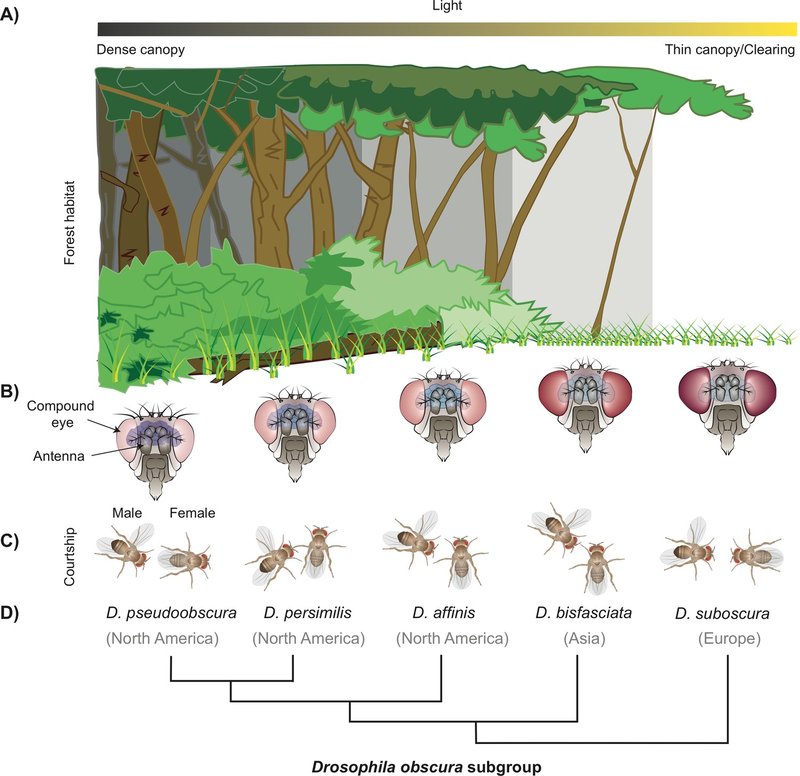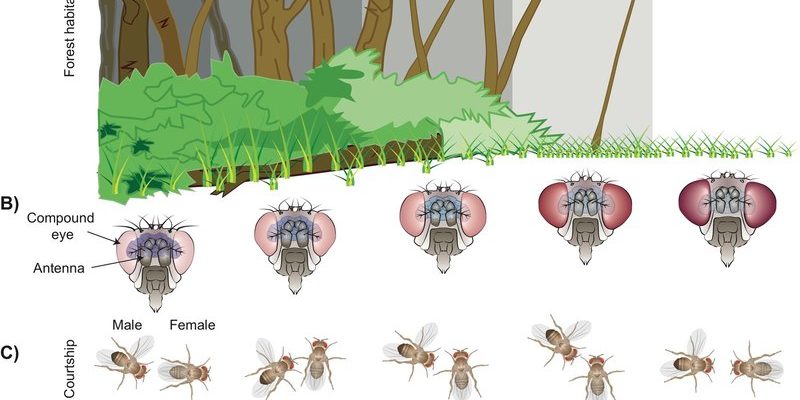
Imagine flies as nature’s ultimate survivors—adapting, thriving, and sometimes befuddling us with their antics. Just like that trusty remote control that never seems to work properly until you figure out its quirks, flies have their own set of surprising features that make them so successful. So, grab a cup of coffee and let’s dive into the captivating world of these tiny marvels and how they came to be.
What Are Flies, Anyway?
Flies belong to the order Diptera, which means “two wings.” This is one of their defining characteristics. Unlike other insects that may have four wings, flies only have a pair, which helps them maneuver through the air with remarkable agility. You’ll often notice their unique body structure: a robust thorax and a small head, typically equipped with large, multifaceted eyes that give them excellent vision.
One interesting aspect of flies is their life cycle. They undergo complete metamorphosis, starting as eggs, then hatching into larvae, which we commonly call maggots. After that, they enter the pupal stage before finally emerging as adult flies. This process takes place over a matter of days to weeks, depending on the species and environmental conditions. So next time you see a fly zipping around, remember it has already gone through a significant transformation!
A Glimpse Into Fly Evolution
The history of flies stretches back to around 400 million years ago, making them one of the oldest insects on the planet. Fossil evidence shows that the early ancestors of flies began to appear well before the dinosaurs roamed the Earth. The fascinating part? Flies have been able to adapt to a wide range of environments, from forests to deserts and even urban areas.
Over time, flies have evolved various traits to help them survive. For example, some species have developed camouflage to blend in with their surroundings, while others have evolved to become scavengers, feeding on decaying organic matter. This adaptability is why flies can be found nearly everywhere today, from your kitchen to the deepest rainforests.
Flies and Their Ecological Role
You may think of flies as pests, but they actually play important roles in our ecosystem. For one, they are vital pollinators. Many species help pollinate flowers, ensuring that plants can reproduce and grow. Without these unsung heroes, our natural landscapes would be vastly different.
Flies also help decompose organic matter. Whether they’re munching on rotting fruit or dead animals, they break down nutrients and return them to the soil—a process that supports new plant growth. This makes flies essential for maintaining healthy ecosystems. So, the next time one buzzes around your picnic, remember that it’s doing its part in the grand scheme of nature!
The Evolution of Fly Behavior
Flies have developed a range of behavioral traits that are intriguing to study. For instance, many species have complex mating rituals. Some male flies perform elaborate dances to attract females, showcasing their strength and agility. Others may use pheromones—chemical signals—to lure mates from long distances.
Interestingly, flies also exhibit social behaviors. Species like the housefly can often be found in large swarms, which serve to protect them from predators. Swarming behavior can confuse attackers, making it harder for them to pick out a single individual. These behaviors illustrate the complexity of fly life and their ability to adapt to challenges.
Flies in Human Culture and History
Throughout history, flies have found their way into human culture in various ways. They’ve been symbols in art, literature, and even religion. In some ancient societies, flies represented decay and disease, while in others, they symbolized resilience and adaptability.
The famous phrase “as busy as a fly” reflects how these creatures are seen as hardworking, buzzing from one task to another. Additionally, their quick reproductive cycles have made them subjects of scientific study in genetics and evolution. Researchers utilize flies, particularly the fruit fly (*Drosophila melanogaster*), to understand fundamental biological processes, including heredity and genetics.
The Future of Flies: Challenges and Adaptations
As our planet changes—thanks to climate change, urbanization, and habitat loss—flies are both facing challenges and adapting in remarkable ways. Some species might thrive in altered environments, while others could struggle to survive. For instance, certain flies have been found to expand their ranges into cooler areas as temperatures rise, while others have adapted their breeding cycles to match changes in climate.
However, with these changes come potential risks. Flies can also carry diseases, the most famous being the infamous *Drosophila*. Understanding how flies evolve in response to environmental pressures is crucial for both ecological balance and public health. Researchers continue to study these relationships to help predict the future of not just flies, but the ecosystems they inhabit.
Final Thoughts: Why Understanding Flies Matters
The evolution and history of flies offer a glimpse into nature’s adaptability and resilience. These tiny creatures, often overlooked or regarded as nuisances, are vital players in our ecosystems. Their complex behaviors, ecological roles, and cultural significance weave a fascinating tapestry that teaches us about survival and adaptability.
So, the next time you swat at a fly or see one buzzing around, take a moment to appreciate the journey it has traveled over millions of years. Flies might not be everyone’s favorite insect, but they carry the narrative of life on Earth—a story of evolution, resilience, and the intricate web of life we all share.

